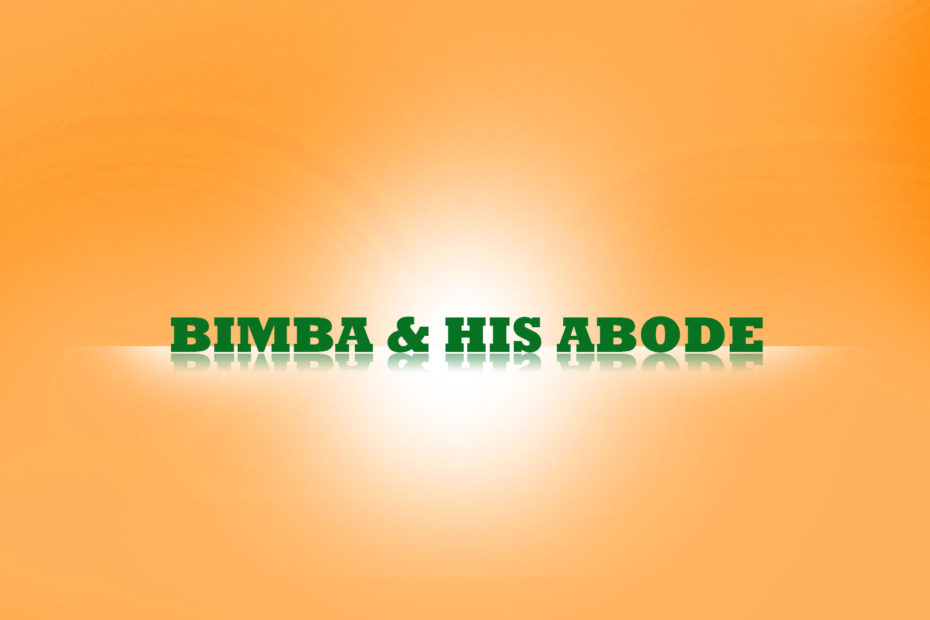The Supreme Lord Sri Hari is omnipresent and has infinite forms. The existence of anything (either sentient or insentient) is by the virtue of His presence within it, in a similar form and name. However, the most unique form of the Lord, a vision of which can liberate souls from the endless cycle of births and deaths, is Bimba. Each Bimba form of the Lord is the archetype of an individual soul. Unlike His other forms, during praḷaya (dissolution of the universe), Bimba does not merge with the Lord’s original form (Nārāyaṇa). All spiritual accomplishments of seekers are for having Bimbāparōkṣa (a vision of the Supreme Lord in His Bimba form), which is absolutely essential for Mōkṣa (liberation). The following is an overview of the Bimba form of the Lord from selected verses of ŚrīHarikathāmr̥tasāra.
There are 72,000 nāḍis (spiritual or cosmic energy channels) in the human body. These nāḍis do not have physical existence and therefore, cannot be seen. Their presence can be experienced only through dhyāna (meditation). The primary nāḍi among these is called the Suṣumnā nāḍi, which originates at the base of the spine and traverses till the crown of the head. It is very thin, about the width of one one-thousandth (1/1000th) of a strand of hair. It is also called as R̥ju nāḍi or Brahma nāḍi as it is erect and free of curves or bends.
At the longitudinal midpoint of the Suṣumnā nāḍi, near the heart of a person, there exists a glowing eight-petalled lotus known as aṣṭadaḷa kamala or hr̥tpadma. It has a yellow-coloured pericarp at the centre, which is surrounded by thirty-two filaments. Around these are the eight petals of the lotus, each one pointing towards one of the eight directions.
This hr̥tpadma is the residing place of Bimba. Here, He is known as Prādēśa. He is of unparalleled divine charm. His radiance is like that of a sun that has just risen. He holds His disc, conch, mace, and lotus and is adorned with several ornaments like epaulets, armlets, bracelets, bejewelled crown, finger rings, Kaustubha gem, pendants, and necklaces [Mātr̥kā sandhi 6]. It is this glorious form of the Lord that must be contemplated during dhyāna.
Further, at the base of the pericarp of the hr̥tpadma, Bimba is known as Mūlēśa. At His feet, Mukhyaprāṇa takes shelter, facing the Lord, with folded hands. At the feet of Mukhyaprāṇa, the soul, bound by liṅga śarīra (subtle body) and anirud’dha śarīra (causal body), takes refuge. The aṣṭadikpālakas (deities of the eight directions) reside in the eight petals of this lotus, looking forward to serve the Lord [Varṇaprakriyā sandhi 19].
Like a revolving potter’s wheel, Mūlēśa (also called as Hamsa) goes around the petals of the hr̥tpadma. While doing so, He gratifies the aṣṭadikpālakas by accepting their services and furthers the soul in its path of spiritual accomplishment (sādhane) [Varṇaprakriyā sandhi 20].
The inconceivably powerful Lord visits the aṣṭadikpālakas in the respective forms that they revere (upāsyamūrti). Bimba’s movement across the hr̥tpadma has a direct effect on the actions and thoughts of the soul (person) as His presence at each point has a specific outcome.
At the eastern petal, Bimba appears as Upēndra to Indra. This persuades the soul to perform meritorious deeds. When He visits Agni (south-eastern petal) as Paraśurāma, the soul feels sleepy, lazy, hungry, and thirsty. Upon His arrival to the house of Yama (southern petal) as Rāma, the soul starts displaying anger and rage. When Bimba is with Nir’r̥ti (south-western petal) as Janārdhana, the soul indulges in sinful activities [Varṇaprakriyā sandhi 21 & 22].
Further, the soul shows interest in fun and humour, when the Lord is in the house of Varuṇa (western petal) as Matsya. The soul is inclined to travel, when Bimba visits Pravahavāyu (north-western petal) as Hayavadana. When He is taking the services of Chandra and Kubēra (northern petal) as Kapila, the soul develops righteousness. When the Lord appears as Narasimha to Rudra in the north-eastern petal, the soul gets the desire to perform charitable acts without any delay [Varṇaprakriyā sandhi 21 & 23].
The presence of Bimba at the centre of the pericarp brings detachment from worldly passions to the soul. His presence in the filaments brings dreams. When Bimba is at the base of the hr̥tpadma, the soul goes into deep sleep (suṣupti), and His return to the pericarp awakens the soul. This way, holding his eight weapons (the disc Sudarśana, the conch Pān̄cajan’ya, the mace Kaumōdakī, lotus, the bow Śārṅga, arrow, sword, and shield), Bimba moves around the hr̥tpadma, prompting the soul to think and act accordingly [Varṇaprakriyā sandhi 24]. Although Bimba’s movement is cyclic around the petals, He does not visit the aṣṭadikpālakas in tandem nor does he do so at random.
Going around the hr̥tpadma, Bimba prompts the soul to do what it needs for completing its sādhane, according to its intrinsic nature and fitness. He encourages sinful activities among souls that are damnable to hell (tamōyōgyas). He protects those who perform their acts as a form of worshipping the Lord, with the only purpose of pleasing Him, and blesses them with greater knowledge and righteousness [Vibhūti sandhi 9]. However, without realizing this dependency, the soul assumes that it has independence or free will. This false sense of independence keeps the soul captive in the endless cycle of birth and death.
Therefore, to secure the grace of Bimba, it is essential to know His divine acts to the best of one’s ability. Without this knowledge, any mechanical reading of prayers and hymns from books or chanting right from sunrise to sunset would not be fruitful [Karmavimōcana sandhi 8].
Ultimately, for any seeker, obtaining divine grace through ripened devotion and constant contemplation of the Bimba form by dhyāna, with a clear understanding of the absolute supremacy and independence of the Lord, is most essential for Bimbāparōkṣa and Mōkṣa.
